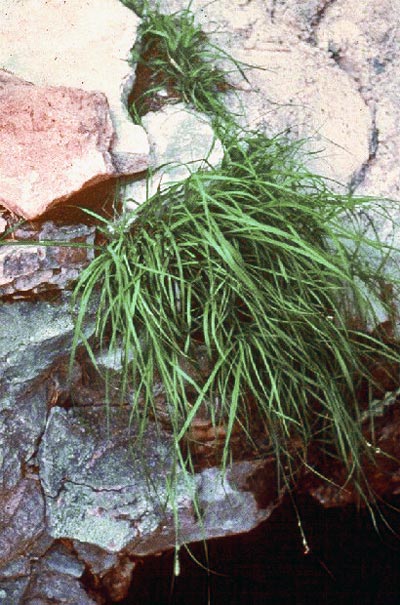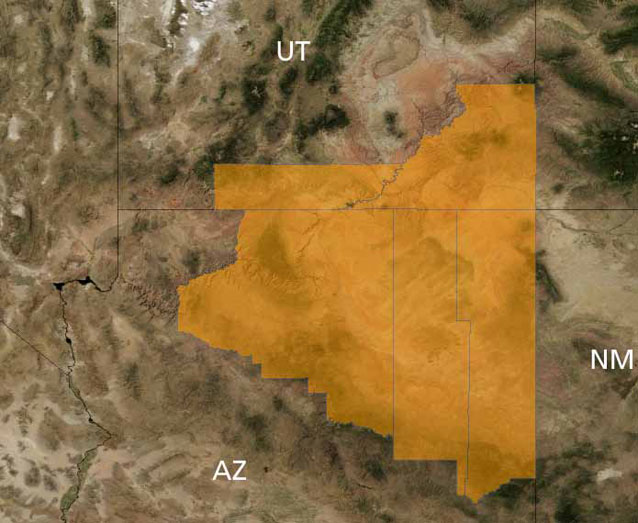Habitat and Ecology

Sue Rutman / USFWS
Navajo sedge (Carex specuicola) is known from a few small populations in northeastern Arizona and southeastern Utah. It occurs only in seeps and springs, usually in moist, sandy or silty soils, with limited soil development in shady seep pockets. The seeps and springs usually occur on Navajo sandstone between 1740 and 1820 m (5710 and 5980 ft) in elevation. Navajo sedge is usually found within pinyon-juniper woodlands.
Description
Navajo sedge is a slender, perennial sedge that forms dense clumps. Triangular stems, 25 to 40 cm (10 to 16 in) tall, rise from slender rhizomes (underground stems). Pale green leaves that are 13 to 20 cm (5 to 8 in) long cluster near the base of the stem. The flowers are inconspicuous, consisting of small, green-brown, scale-like parts. The flowers are grouped into two to four short spikes, with the female flowers located above the male flowers. The flowers are unusual in that they have both distinctive two-branched styles with lens-shaped achenes (a dry, one-seeded fruit with a thin wall that does not open at maturity; e.g. a sunflower “seed”), and threebranched styles with three-sided achenes. Navajo sedge mostly reproduces vegetatively, through rhizomes.

USFWS
Conservation Status and Threats
The U.S. Fish and Wildlife Service has listed Navajo sedge as a threatened species since May 8, 1985. Utah lists it as critically imperiled, and Arizona and the Navajo Nation list it as imperiled.
Navajo sedge is palatable to livestock and very sensitive to water table disruptions. Therefore, its viability is threatened by grazing and by water diversion projects.
Related species
Navajo sedge resembles different-nerve sedge (Carex heteroneura) in that its small, greenish-white bract enclosing the pistil and in its conspicuously nerved scales. However, the bract enclosing the pistil of Navajo sedge plants has short rounded bumps and saw-like edges.
References
Arizona Game and Fish Department. 1995. Carex specuicola. Plant Abstract. Heritage Data Management System, Arizona Game and Fish Department, Phoenix, AZ. Available at http://www.azgfd.gov/w_c/edits/ documents/Carespec.d_000.pdf (accessed 13 October 2010).
NatureServe. 2009. Carex specuicola. NatureServe explorer: An online encyclopedia of life. Version 7.1. NatureServe, Arlington, VA. Available at http://www. natureserve.org/explorer/ (accessed 13 October 2010).
U.S. Fish and Wildlife Service. 1985. Determination of Carex specuicola to be a threatened species with critical habitat. Federal Register 50(89): 19370-19374.
U.S. Fish and Wildlife Service. 1987. Navajo sedge (Carex specuicola) recovery plan. U.S. Fish and Wildlife Service, Albuquerque, NM. Available at http://www. fws.gov/ecos/ajax/docs/recovery_plan/870924.pdf (accessed 13 October 2010).
Prepared by Kelly Reeves, Southern Colorado Plateau Network Inventory and Monitoring Program, 2010.
Last updated: July 29, 2015
